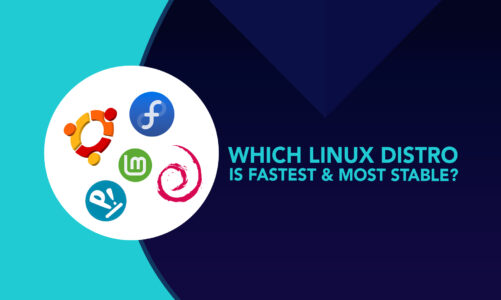Xubuntu is an official flavour of Ubuntu, which uses the Xfce desktop environment to provide a fast and efficient computing experience. Xubuntu is often considered faster than Ubuntu which is the flagship distribution of the Ubuntu family due to several reasons.
These reasons include its lightweight desktop environment, minimal default applications, customizable interface, optimization for older hardware, efficient resource utilization, and community focus on performance. All these things are the prime reason why Xubuntu is dominating over Ubuntu.
While Ubuntu uses the GNOME desktop environment, which provides a more modern and feature-rich user interface, it also requires more system resources to run smoothly. In contrast, Xubuntu uses the Xfce desktop environment, which is designed to be lightweight and fast, using fewer system resources.
This article delves into the factors that contribute to Xubuntu’s reputation for being faster than Ubuntu.
1: Lightweight Desktop Environment
Xubuntu uses the Xfce desktop environment, which is known for its lightweight and efficient design. Xfce is designed to use fewer system resources compared to other popular desktop environments like GNOME or KDE, making Xubuntu a great choice for older or low-end hardware configurations. Xfce provides a simple and streamlined interface with essential features while minimizing resource usage, resulting in faster performance on lower-end hardware.
2: Lower System Requirements
Xubuntu has lower system requirements compared to Ubuntu, which contributes to its faster performance. The Xubuntu system requirements are typically lower, making it suitable for older hardware configurations or systems with limited resources.
For example, Xubuntu requires only 512MB of RAM and 10GB of storage space, while Ubuntu recommends 2GB of RAM and 25GB of storage space. This means that Xubuntu can run more efficiently on lower-end hardware, resulting in faster performance compared to Ubuntu.
3: Optimized Performance
Xubuntu is optimized for performance, providing a snappy and responsive experience. The Xfce desktop environment focuses on delivering a fast and efficient user experience with minimal overhead.
Xfce uses fewer animations, visual effects, and system resources, resulting in faster window rendering, quicker application launch times, and smoother overall performance compared to heavier desktop environments.
4: Efficient Resource Utilization
Xubuntu is designed to utilize system resources efficiently, making it a faster option compared to Ubuntu. Xfce is known for its lightweight design and low resource usage, allowing it to run smoothly on systems with limited RAM or CPU power. Xfce uses less memory and CPU resources compared to GNOME or KDE, resulting in faster performance, especially on systems with lower hardware specifications.
5: Customizable Settings
Xubuntu provides extensive customization options that allow users to tailor their systems for optimal performance. Xfce desktop environment provides numerous settings and configuration options, allowing users to fine-tune their system to their preferences.
This includes options to disable or enable specific features, adjust visual effects, manage startup applications, and more. This level of customization empowers users to optimize their system settings for better performance, resulting in faster performance compared to Ubuntu, which may have more pre-configured settings.
6: Fewer Preinstalled Applications
Xubuntu comes with a lighter set of preinstalled applications compared to Ubuntu, which can contribute to its faster performance. While Ubuntu comes with a rich set of applications, including office suites, media players, and more, Xubuntu comes with a more minimalist set of preinstalled applications. This means that Xubuntu has fewer background processes running by default, resulting in less overhead and faster performance.
7: Community-Driven Development
Xubuntu is part of the larger Ubuntu community, which is known for its community-driven development approach. The Xubuntu community actively contributes to the development and optimization of Xfce, the desktop environment used in Xubuntu, ensuring that it remains efficient and optimized for performance.
This community-driven development approach allows for regular updates, bug fixes, and performance optimizations, resulting in continuous improvements and faster performance over time.
8: Long-Term Support (LTS) Releases
Xubuntu provides Long-Term Support (LTS) releases, which are designed for stability and performance. LTS releases are supported for a longer duration compared to regular releases, providing users with a stable and optimized environment for a longer period.
This can be beneficial for users who prioritize stability and performance and want to avoid frequent updates that may impact system performance. The LTS releases of Xubuntu are optimized for performance and provide a stable environment, contributing to faster performance compared to regular releases.
9: User-Choice Philosophy
Xubuntu follows a user-choice philosophy, allowing users to customize and configure their system according to their preferences. This flexibility empowers
Conclusion
Xubuntu is often considered faster than Ubuntu due to a combination of factors such as its lightweight and efficient Xfce desktop environment, lower system requirements, lighter default software selection, greater customization options, efficient resource management, focus on simplicity, community-driven development, and user-choice philosophy.
These factors contribute to Xubuntu’s reputation as a fast and efficient operating system, particularly on older or less powerful hardware. That’s why it is a good choice for users who want a fast, lightweight, and reliable Linux-based operating system that can perform smoothly on both older and less powerful hardware.



